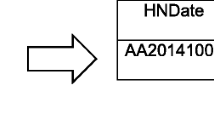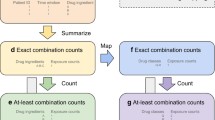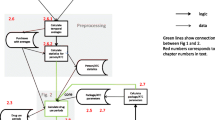Abstract
The current study refers to the affinity analysis of a prescription and diagnosis dataset and focuses on how prescription behavior changes after the detection of a disorder. Using a subset of patients that have been diagnosed, at least once, with hypertension and hyperlipidemia, examines the prescription behavior of the doctor after the detection of gastroesophageal reflux (K21), or insulin-dependent diabetes mellitus (E10). Diagnosis and prescription data were collected during consecutive visits of 4473 patients in a 3 years period. The analysis of the prescription data before and after the diagnosis of K21 and E10 reveals the popular substances for each disorder, such as Metformin for E10, or Omeprazole for K21 and substances that are discontinued including the same popular substances as well. It also reveals that substances that treat the main disorders of the group, such as Simvastatin and Hydrochlorothiazide are discontinued after the diagnosis of K21 and E10. Apart from the medical findings, which must be subject of further research, the proposed methodology can be employed for studying the prescription behavior of physicians and how it changes after specific diagnoses.


Similar content being viewed by others
References
Agrawal R, Imieliński T, Swami A (1993) Mining association rules between sets of items in large databases. ACM Sigmod Record 22:207–216
Akdag B, Fenkci S, Degirmencioglu S, Rota S, Sermez Y, Camdeviren H (2006) Determination of risk factors for hypertension through the classification tree method. Adv Ther 23(6):885–892
Bay SD, Pazzani MJ (2001) Detecting group differences: mining contrast sets. Data Min Knowl Discov 5(3):213–246
Bhatnagar D, Soran H, Durrington PN (2008) Hypercholesterolaemia and its management. Br Med J 337
Carroll D, Phillips AC, Gale CR, Batty GD (2010) Generalized anxiety and major depressive disorders, their comorbidity and hypertension in middle-aged men. Psychos Med 72(1):16–19
Chang CD, Wang CC, Jiang BC (2011) Using data mining techniques for multi-diseases prediction modeling of hypertension and hyperlipidemia by common risk factors. Expert Syst Appl 38(5):5507–5513
Dharshinni N, Mawengkang H, Nasution M (2018) Mapping of medicine data with k-means and apriori combinations based on patient diagnosis. In: 2nd International conference on computing and applied informatics, J. Phys.: Conf. Series, 978 IOP Publishing
Dogan S, Turkoglu I (2008) Diagnosing hyperlipidemia using association rules. Math Comput Appl 13(3):193–202
Giordano G, De Santis M, Pagano S, Ragozini G, Vitale MP, Cavallo P (2020) Association rules and network analysis for exploring comorbidity patterns in health systems. Challenges in social network research. Springer, Berlin, pp 63–78
Ittermann T, Tiller D, Meisinger C, Agger C, Nauck M, Rettig R, Hofman A, Jørgensen T, Linneberg A, Witteman JC et al (2013) High serum thyrotropin levels are associated with current but not with incident hypertension. Thyroid 23(8):955–963
Jiawei Han M, Pei J (2011) Data mining: concepts and techniques: concepts and techniques
Koh KK, Quon MJ, Han SH, Lee Y, Kim SJ, Shin EK (2010) Atorvastatin causes insulin resistance and increases ambient glycemia in hypercholesterolemic patients. J Am Coll Cardiol 55(12):1209–1216
Lee SP, Lee KN, Lee OY, Lee HL, Choi HS, Yoon BC, Jun DW, Sohn W, Cho SC (2012) The relationship between existence of typical symptoms and psychological factors in patients with erosive esophagitis. J Neurogastroenterol Motil 18(3):284
Novak PK, Lavrač N, Webb GI (2009) Supervised descriptive rule discovery: a unifying survey of contrast set, emerging pattern and subgroup mining. J Mach Learn Res 10:377–403
Ou-Yang C, Agustianty S, Wang HC (2013) Developing a data mining approach to investigate association between physician prescription and patient outcome-a study on re-hospitalization in stevens-johnson syndrome. Comput Methods Programs Biomed 112(1):84–91
Pattanaprateep O, McEvoy M, Attia J, Thakkinstian A (2017) Evaluation of rational nonsteroidal anti-inflammatory drugs and gastro-protective agents use; association rule data mining using outpatient prescription patterns. BMC Med Informat Decis Making 17(1):96
Petrie JR, Guzik TJ, Touyz RM (2018) Diabetes, hypertension, and cardiovascular disease: clinical insights and vascular mechanisms. Canadian J Cardiol 34(5):575–584
Reps J, Guo Z, Zhu H, Aickelin U (2015) Identifying candidate risk factors for prescription drug side effects using causal contrast set mining. Int Conf Health Inf Sci. Springer, Berlin, pp 45–55
Sanida T, Varlamis I (2017) Application of affinity analysis techniques on diagnosis and prescription data. In: 2017 IEEE 30th International symposium on computer-based medical systems (CBMS), IEEE, pp 403–408
Ture M, Kurt I, Kurum AT, Ozdamar K (2005) Comparing classification techniques for predicting essential hypertension. Expert Syst Appl 29(3):583–588
Wagstaff AJ (2006) Valsartan/hydrochlorothiazide. Drugs 66(14):1881–1901
World Health Organization (2007) UNAIDS. prevention of cardiovascular disease. World Health Organization
Wright AP, Wright AT, McCoy AB, Sittig DF (2015) The use of sequential pattern mining to predict next prescribed medications. J Biomed Informat 53:73–80
Wu L, Parhofer KG (2014) Diabetic dyslipidemia. Metabolism 63(12):1469–1479
Author information
Authors and Affiliations
Corresponding author
Additional information
Responsible editor: Panos Papapetrou and Myra Spiliopoulou.
Publisher's Note
Springer Nature remains neutral with regard to jurisdictional claims in published maps and institutional affiliations.
Rights and permissions
About this article
Cite this article
Varlamis, I. Affinity analysis for studying physicians’ prescription behavior.. Data Min Knowl Disc 35, 1739–1759 (2021). https://doi.org/10.1007/s10618-021-00758-4
Received:
Accepted:
Published:
Issue Date:
DOI: https://doi.org/10.1007/s10618-021-00758-4




